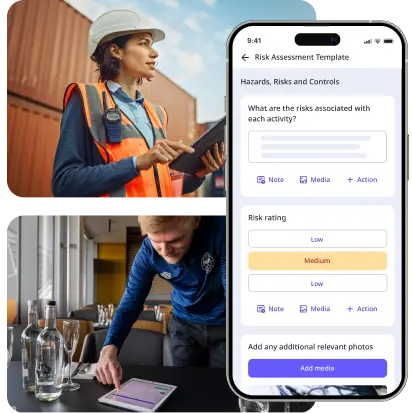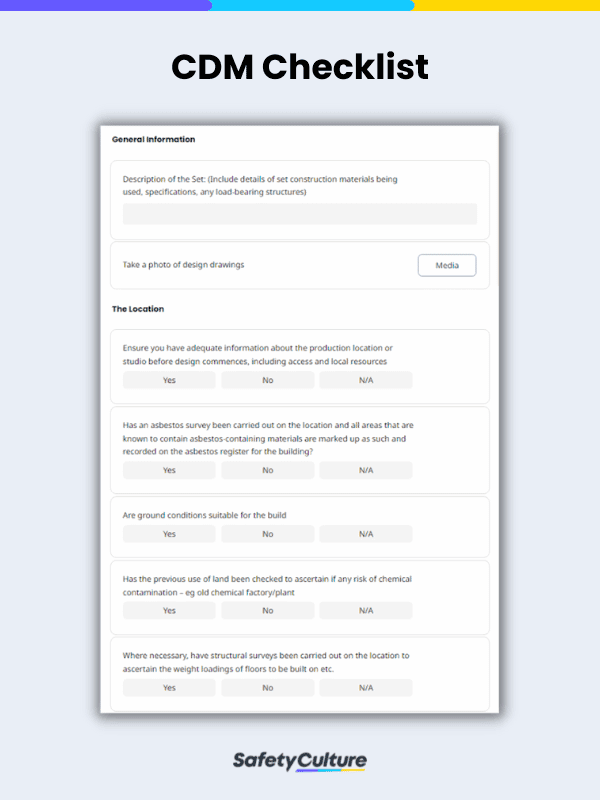What is CDM 2015?
Construction Design and Management (CDM) 2015, generally known as CDM regulations, is an HSE regulatory standard enforced last April 2015. It aims to improve health and safety across the construction industry and ensure construction projects and plans take worker safety into consideration so injuries and fatalities can be avoided. CDM regulations protect the physical well-being of employees as well as define their responsibilities according to their job roles.
Importance of CDM Regulations
The 2020 Health and Safety Executive (HSE) key statistics reported that at least 81,000 workers suffered from work-related illnesses to construction sector workers from 2018 to 2019 in Great Britain alone. These incidents can be avoided beginning in the early stages of project development through compliance with CDM regulations. Proper implementation of CDM regulations can:
- help identify and manage construction risks concerning the project;
- pick qualified workers for the required jobs; and
- coordinate and communicate risks with personnel involved in the project.
What is CDM Risk Assessment?
A CDM risk assessment is performed to minimize the likelihood of risks as construction work progresses. It evaluates whether identified risks are avoidable or unavoidable so the appropriate controls can be applied to bolster safety.; A good CDM risk assessment reduces the risk of accidents, near misses, and fatalities during construction work.
This article will feature: 1) CDM requirements based on personnel duties; 2) consequences of non-compliance with CDM regulations; 3) tool used to streamline CDM risk assessments; and 4) free downloadable CDM risk assessment templates you can customize and use.
Construction Design and Management Requirements Based on Personnel Duties
CDM regulations are applied to different roles in construction work. Listed below are the responsibilities of the most common work roles in the construction industry:
- Commercial clients are organizations or individuals who employ the services of construction professionals to complete construction projects. They are responsible for ensuring that the principal architects, engineers, and contractors perform their work duties in a responsible and safe manner. They also have crucial influence over the health and welfare management of workers during the construction phase.
- Designers/Architects are professionals who are responsible for creating and/or modifying designs for construction projects. They assess the plausibility of design proposals, ensuring that they are structurally sound to ensure the safety of the workers and the building’s future tenants.
- Contractors are responsible for comprehending the blueprint presented and approved by the designer/architect and performing the actual construction work. They are liable for monitoring and managing workers by ensuring they are adequately trained to perform their duties, and that they are aware of site safety practices through toolbox talks.
- Workers are individuals who execute manual labor. They are responsible for complying with construction site rules and procedures, including incident reporting protocols for identified risks during construction work.
Consequences of Non-Compliance with CDM Regulations
Construction personnel are expected to comply with CDM regulations to avoid legal and ethical repercussions. Failure to adhere to CDM regulations can lead to the following:
Increased construction risks
Safety is paramount across the construction industry. Overlooked construction risks increase the likelihood of accidents from happening. CDM regulations aim to protect employees from construction risks such as accidental falls, being struck by an object, accidental electrocutions, and being caught between objects and machines.
Cost blowout
Failure to adhere to CDM regulations during the planning and construction stages of a project may lead to “budget blowouts” due to the inefficiencies and technical difficulties the construction team may encounter during the course of work. Adhering to CDM regulations help make the scope of work clear so work can be completed faster with fewer hindrances.
Increased penalties
Noncompliance with HSE and CDM regulations may result in substantial fines and criminal liabilities. Construction personnel and key project stakeholders can avoid this by assessing and monitoring risks from the beginning until the completion of a project.



